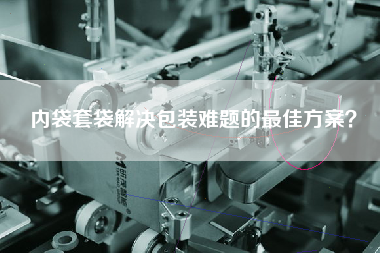Packaging is a very important link, especially for food, medicine and other industries, the quality of packaging is directly related to the safety and quality of products. As a new way of packaging, inner bag has been adopted by more and more enterprises. So, what on earth is the inner bag? What are its advantages? Let’s learn about them one by one.
1. What is inner bagging?
Inner bag bagging is a way of packing one bag on top of another. Generally speaking, the inner bag is used to pack the product, while the outer bag is used to protect the inner bag. Inner bagging can effectively protect the product from external pollution and damage.

Second, the advantages of inner bagging
1. Protect the product
Inner bagging can effectively protect the product from external pollution and damage. The inner bag can prevent the product from coming into contact with the outside world, while the outer bag can prevent the inner bag from being scratched or torn, thus protecting the integrity of the product.
two。 Improve the quality of products
The inner bag can guarantee the quality of the product. The inner bag can prevent the product from being affected by the outside world, while the outer bag can prevent the inner bag from being scratched or torn. In this way, the quality of the product is guaranteed.
3. Improve the competitiveness of products
Inner bagging can improve the competitiveness of products. Because the inner bag can protect the quality and integrity of the product, thus improving the competitiveness of the product. In this way, enterprises can gain more market share.
Third, how to carry out inner bagging?
1. Choose the appropriate inner and outer bags
First of all, choose the appropriate inner and outer bags. The material, thickness and size of the inner and outer bags need to be selected according to the characteristics of the product.
two。 Put the inner bag into the outer bag
Put the inner bag into the outer bag and make sure there is no gap between the inner bag and the outer bag. If there is a gap, you can fill the gap in the inner bag, or use a filler to fill the gap.
3. Seal
Align the sealing place of the inner bag and the outer bag, and use the sealing machine to seal. When sealing, make sure there is no air leakage or water leakage at the seal.
4. Check
After the sealing is completed, check the inner bag to ensure that there is no gap between the inner bag and the outer bag, and there is no air or water leakage at the seal.
Fourth, the scope of application of inner bagging
Inner bagging is suitable for food, pharmaceutical, chemical, electronics and other industries. In these industries, the quality and safety of products are very important, and inner bagging can effectively protect products and improve product quality and safety.
V. Summary
Inner bagging is a new type of packaging, which has the advantages of protecting products, improving product quality and competitiveness. When carrying out the inner bag bagging, it is necessary to select the appropriate inner bag and outer bag, put the inner bag into the outer bag, seal it, and check it. Inner bagging is suitable for food, pharmaceutical, chemical, electronics and other industries, which can effectively protect products and improve product quality and safety.
